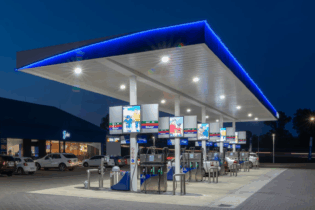South Africa is battling to control overloading. And Paul Nordengen of the Council for Scientific Research, says a culture of non-compliance exists in South Africa today.
He was delivering a presentation detailing the overload control challenges that exist in the country today at a transport forum special interest group session last week. This attitude, he said, was widespread and not contained to certain sectors of the economy, such as the road transport industry. While heavy and extra-heavy vehicles were often singled out for overloading, all types of vehicles were being subject to the practice, he said. Nordengen explained that overloading lead to increased congestion caused by damaged roads and accidents, which raised logistics costs in the country. “Overloading has a bigger impact than most people think,” he added. The poor condition of trucks, and the lack of maintenance, combined with the poor condition of drivers, when added to overloading, created a “recipe for disaster”. “South Africa has a bad track record of overloading,” he added. While South Africa has very good road infrastructure by continental and even international standards, a high number of highways and freeways and high geometric standards, a lot of deterioration, particularly with regards to provincial roads and municipal/metropolitan road networks was evident. Conceding that overloaded trucks damaged roads, he also identified the lack of periodic maintenance of roads as being a major factor in there deterioration. In 1988, sixty percent of roads in the Northern Cape were deemed to be in very good condition, but by 2008, this had dropped to just 5%. In the most glaring case of overloading seen by Nordengen in South Africa, six trucks, each carrying cobalt concentrate from the DRC – over a distance of around 3 500km trip – were each found to be overloaded by between 30 and 37 tons in 2004. “The N4 concession from Mozambique regularly sees vehicles with 40 tons placed on tandem axle units, even though the maximum permissible limit is 18 tons,” he said. According to Nordengen, South Africa has a high incidence of crashes involving heavy vehicles in which overloading was a contributing factor.Nordengen said inadequate weighbridge infrastructure, the location of weighbridges – particularly with regards to alternative routes – and a lack of money to build the number of weighbridges necessary to adequately police the road network, posed challenges to overload control efforts.
“There are just too many routes and efficient vehicle weighing procedures are lacking. Where weighbridges are operational, they don’t have the right facilities for screening and we end up with long queues of trucks waiting to be weighed,” he explained. At the bigger vehicle weighing facilities, screening facilities were often dysfunctional or were totally absent while a limited number of roads were being policed. He said Gauteng was, in some way, the exception to the rule. He suggested that roving teams with mobile devices could identify severely overloaded trucks, before escorting them to weighbridges, before admitting this solution would place massive demands on manpower. Weighbridges also needed maintenance contracts. “If there are no mechanisms in place to repair weighbridges quickly, then those centres could be out of action for a week or a month or even six months.” He added that lightning strikes frequently damaged load cells in weighbridges. Another challenge identified is the inconsistent application of mass regulations, which relates to the training of traffic staff. Nordengen said weighbridge data needed to be collected, gathered and analysed before being reported upon. “Inadequate data management and reporting is widespread,” he said. Most vehicles checked for overloading were on national routes as there is very limited overload control activity on provincial routes. According to Nordengen, two million vehicles were weighed in 2014, with Mpumalanga (N4 corridor) recording the most with just under 670 000 vehicles weighed. In stark contrast, the Eastern Cape weighed just 65 vehicles during the same period. He said the operational hours of many weighbridges were constrained and so could be easily bypassed. “An ineffective court system means that many overload cases are not successful in court. Low fines are imposed and the practice is seen as “unimportant” by the Department of Justice, he claimed. The self-regulatory Road Transport Management System had been proposed as part of a strategy to address overloading in 2002, while new consignee/consignor legislation, implemented on 31 January 2015, is an attempt by government to reduce incidences of overloading.







